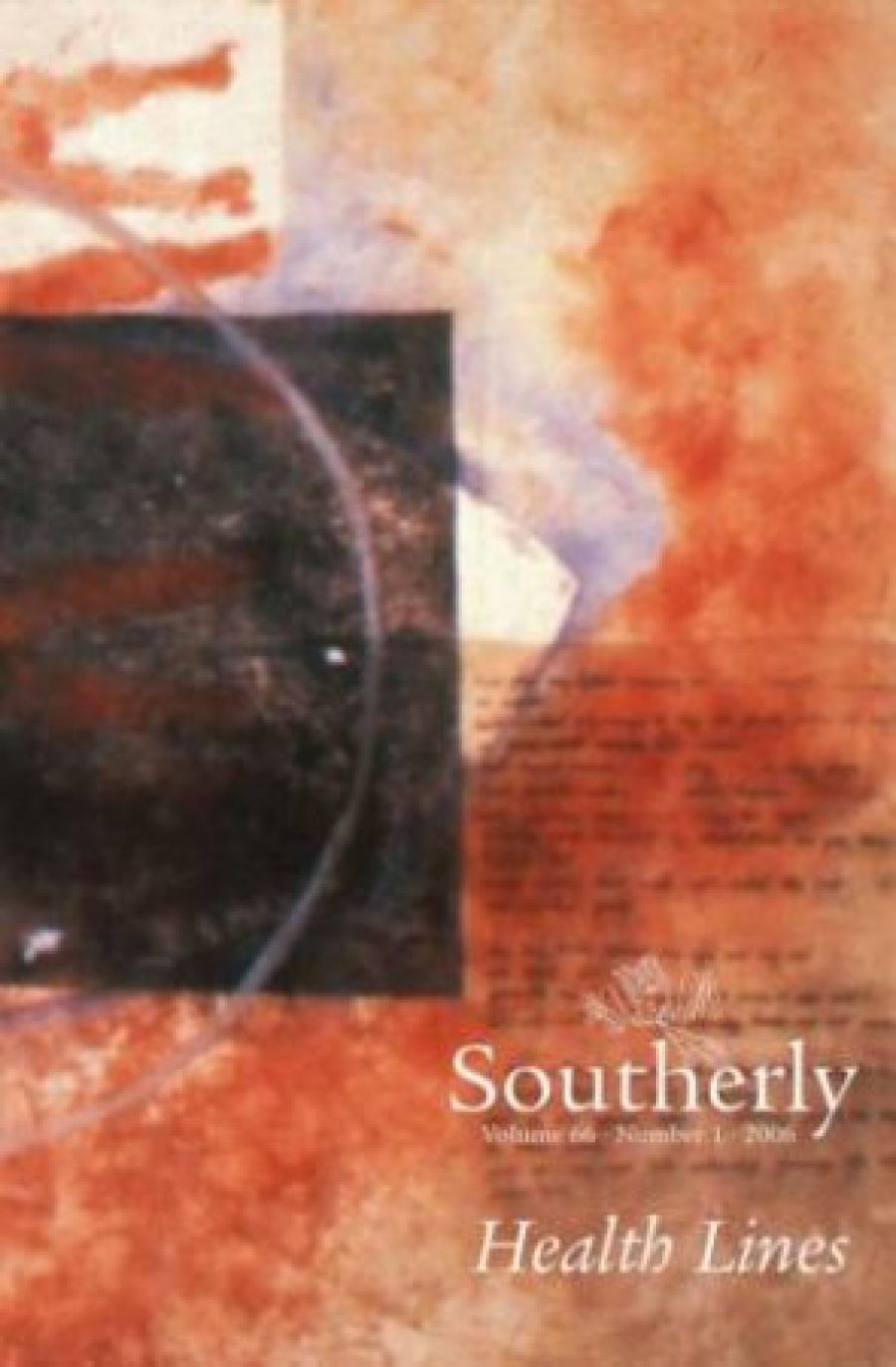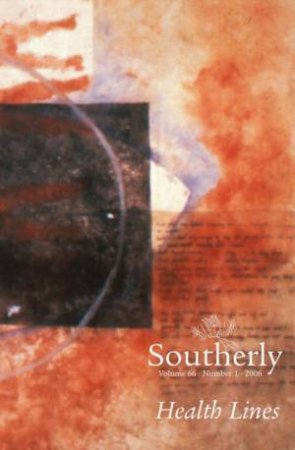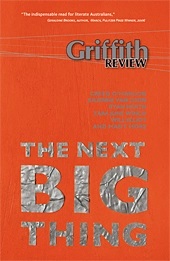
- Free Article: No
- Contents Category: Journals
- Custom Article Title: Boomers and Beemers
- Review Article: Yes
- Article Title: Boomers and Beemers
- Online Only: No
- Custom Highlight Text:
One of the best essays in the excellent spring issue of Griffith Review: The Next Big Thing, is a sustained attack by Griffith University academic Mark Bahnisch on the lazy clichés of ‘generation-journalism’. In an issue devoted to an examination of generational similarities and conflicts, Bahnisch calmly reminds us that not everyone living in the 1960s was a hell-raising radical, just as not all young people today fit the conservative–materialist stereotype the media is so fond of.
- Book 1 Title: Southerly
- Book 1 Subtitle: Vol. 66, No. 1, Health Lines
- Book 1 Biblio: Brandl & Schlesinger, $26.95 pb, 203 pp, 1876040815
- Book 1 Cover Small (400 x 600):

- Book 1 Cover (800 x 1200):

- Book 2 Title: Griffith Review 13
- Book 2 Subtitle: The next best thing
- Book 2 Biblio: $19.95 pb, 286 pp, 0733319386
- Book 2 Cover Small (400 x 600):

- Book 2 Cover (800 x 1200):

Eve Vincent’s ‘Confusions of an Economist’s Daughter’ tracks the political coming of age of those who grew up in the Whitlam, Fraser, Hawke and Keating years. A child of Whitlamite parents who went on to embrace the economic rationalism of the Keating era, Vincent focuses on the shifts in Australia’s political culture, the rise of globalisation and the way these social forces have shaped her own philosophy. This is not a dry political overview; it is an elegant meditation on how our families and our society shape our opinions about the world. Her descriptions of her conversations with her grandfather offer great insight into how political awareness can be a complicated and very personal thing. She demonstrates how the energy and enthusiasm of youthful intelligence can shift into a more mature perspective without sacrificing its vigour. Her keenness to look to past generations and their experiences for insights into the present debunks the dominant model of generational warfare.
Cameron Muir’s essay, ‘Is Your History My History?’ is another standout contribution. Ostensibly about the need for more local histories addressing racial rifts in contemporary Australia and filling in the gaps in the broader national history, Muir gently teases out the possibility that the key to this is intergenerational empathy. In his quest to find the origins of a human skull that was in his grandfather’s possession for many years, Muir is assisted by his mother and grandmother, and by members of the Dubbo Local Aboriginal Land Council. His youthful energy and confidence that he can put things right is optimistic, yet there is real substance in his ideas about the importance of understanding.
Not all of the inclusions are entirely successful. Creed O’Hanlon is the ‘token boomer contributor’. His essay, ‘My Generation’, is an entertaining survey of the defining characteristics of the most well-known generation groupings: ‘The Silent Generation’, born between the wars and, O’Hanlon argues, the ideological powerhouse behind counter-cultural activity in the 1960s; the ubiquitous ‘Baby Boomers’; ‘Generation X’, ironic, asymmetric hairstyle-wearing, Cobain-worshipping slackers; ‘Generation Y’, insular, technologically astute, Howard-worshipping smartarses. O’Hanlon’s tendency to generalise is suited to the concerns of his piece, but it’s alarming when he lurches from overview into ludicrous factoids such as:
At the edge of politics, straddling faded dividing lines between church and state, Boomers are among the most vociferous proselytisers not only for Christian Fundamentalism … but, it might also be argued, for Islamic Fundamentalism as well (Iran’s Islamic President Mahmoud Ahnadinejad, born in 1956, and Osama bin Laden, born a year later, are notable examples).
This kind of comment exposes the mindless elasticity of generational stereotypes and their capacity to inscribe any individual or action with a predestined, ‘oh he would do that, he’s such a boomer’ tag. When the terrorist son of a Saudi billionaire is roped into the very Western concerns of the generation wars, the category may have exceeded its usefulness.
Ryan Heath’s essay ‘Lopping Tall Poppies’ sets out to document the reaction he received upon publication of his book, Please Just F* Off, It’s Our Turn Now (2006). He breathlessly relates his treatment at the hands of the tyrannical boomer-dominated media and the unfairness of it all. It is staggering in its egocentricity and sense of entitlement. He betrays himself at every turn as someone who really wants to be one of the brainless, blinkered, shallow boomers that he so stridently claims to despise. He wants to jump into the nicely warmed seat of their mid-life crisis Beemer and keep on driving down the same well-worn road, stereo blasting out the ironic Beach Boys soundtrack.
It is easier to generalise about generations and section them into marketing target groups than it is to consider difference and discord. This homogenisation of Western culture into herds of consumers with by-numbers experiences, prejudices and aspirations does nothing to define human experience; it denies complexity, difference and imagination.
The new issue of Southerly is concerned with experiences, observations and narratives depicting illness and health. John Wiltshire’s critical essay on the history of pathography, or illness narratives, in modern literature is well researched and well argued. The pathographic form was first explored in Victorian times, but came into its own in the second half of the twentieth century, beginning with books such as Simone de Beauvoir’s A Very Easy Death (1964) and more recently with Tony Moore’s Cry of the Damaged Man (1991) and Tiger’s Eye (2000), by Inga Clendinnen. Dinah Partridge’s essay is also about pathography, but it is a far more personal meditation on the notion of writing as therapy. Partridge begins by detailing her experience of a mysterious auto-immune condition which affected her lungs and resulted in brain tumours requiring neurosurgery. She describes a growing disillusionment with the notion that writing can provide cure for the psychological trauma caused by multiple surgical procedures and serious illness. ‘It is too simplistic to state that writing is itself therapeutic,’ she argues, concluding that it is only those who possess great skill as writers who can claim to experience any catharsis from the process. Inarticulateness only leads to frustration, ‘prolonging an experience or indulging a predisposition’. That said, Partridge writes well, approaching a difficult topic with clarity and honesty.
The highlight of this particular issue is the poetry and the poetry reviews. Rachel Power’s review of John Kinsella’s The New Arcadia and Margaret Bradstock’s Coast is lucid and insightful. Maria Takolander and David McCooey are both impressive, each contributing a pair of poems addressing Stanley Kubrick’s films. McCooey’s ‘An Essay on Stanley Kubrick’s The Shining’ is particularly good:
What becomes of the boy,
we wonder, once we have safely
seen his father’s corpse, frozen
in the achromatic salt
of a pure, factitious snow.
John West’s unsentimental poems, Hospital Laundry and Being an Old Man, are also impressive. Both approach the physical aspect of ageing with a clinical tone that is matter of fact while also tapping a deep reserve of compassion. Peter Kirkpatrick’s humorous poem, Late Summer Light, playfully and languidly evokes a humid evening in Sydney.
Unfortunately, the fiction reviews in this issue were not as strong. Ann Penhallurick’s review of The Secret River (2005) ambles along forgettably, marred by sentences such as: ‘Although, in the end, the book “got me”, it took a while and it never quite became a “really good read”.’ Bryant George’s review of Brian Castro’s The Garden Book (2005) was merely incomprehensible. Some of the fiction was enjoyable, the best piece being Glad Tidings of Great Joy by Maggie Joel, a droll depiction of a family enduring Christmas Day.


Comments powered by CComment